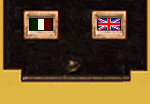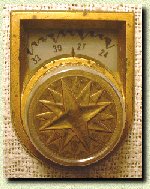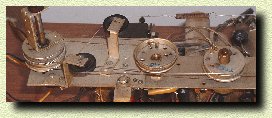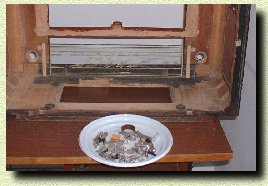|
|
Here you can see the internal view
of the receiver when removed from its wood cabinet. Note the high
components density due to the frequency modulation stage. In this
receiver the components layout is very untidy. |
Here the top view of the receiver.
It's easy to see the AF and MF stage on the right and the power
sypply on the left. The big wheel on the right is the system in
order to obtain a "fluid" stations tuning while turn the tuning
knob. |
|

|
A detailed view of the AM ferrite aerials.
These ferrite coils are mounted on a rotating disk, so during the
station searching from a know outside the cabinet is possible to
adjust the right antenna rotation, this in order to improve a better
signal strengh. |
This is the external knob used to
rotate the internal AM ferrite aerials. On the knob there is a switch
wich is possible activate/deactivate this function. When the indicator
is placed on "0" the switch exclude the internal aerials so the
receiver can operate with the external one. |
|
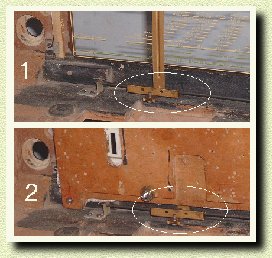
|
In this picture you can see the strange
way used to assembly the tuning scale and its indicator. Between
the glass tuning scale and the tuning indicator there is a wood
panel used as loudspeaker frame. All this assembly/disassembly operation
require a great patience to obtain a perfect alignment between the
components, otherwise the tuning indicator during the tuning movement
can touch the tuning scale and scratch it. Please note the wholes
on the wood frame... a lot of woodworms..... sigh. |
Detailed view of the wheel used to
obtain a "fluid" tuning searching while rotating the tuning knob.
Unfortunatly the tuning knob is very small, so specially when in
short waves it isn't easy to find a station correctly. The magic
eye can help in this. |
|
|
|
This is only a part of the complicated
system developed by the Philips engineers to obtain with only two
external knob several controls such as volume, tone, sensibility,
band selection and tuning of this receiver. |
Here in the white plastic dish you
can see only a part of all the mechanics screw, frame holders, springs,
whashers used in this compact but complicated receiver. |
|


